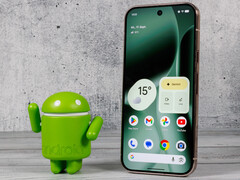

I can’t comprehend why Samsung even bothered.
In May, Samsung deviated from its usual pattern of launching three flagship phones with the revelation of the Galaxy S25 Edge. This device measures a mere 5.8mm in thickness, which is quite remarkable from a technology perspective, yet it pales in comparison to the iPhone Air’s 5.64mm chassis.
To get straight to the point, ultra-slim phones are not for me, and it’s not just because I have a nearly two-year-old in the house. There are far too many sacrifices made solely for the sake of achieving an ultra-thin design, and no matter how hard Samsung or Apple might attempt, a company cannot simply redefine the laws of physics.
Recent reports indicate that I might not be the only one who feels this way about extremely thin smartphones. Just a month following its release, it was reported that “Galaxy S25 Edge sales are falling short of expectations.” Prior to that, another report stated that “consumer interest in the Galaxy S25 Edge is lower than Samsung had originally anticipated.”
Now, it appears that Samsung’s ambitions for the Galaxy S26 Edge may have been impacted, with reports suggesting that the device might not debut next year as planned. Let’s explore why that may be.
Numerous compromises
The most conspicuous compromise is that the S25 Edge sells for $999 while only featuring a dual-camera arrangement. It utilizes the same 200MP primary wide-angle camera found in the Galaxy S25 Ultra and Galaxy Z Fold 7, but it also has a reduced 12MP ultrawide camera and omits the telephoto sensor entirely.
But what if the absence of a telephoto lens doesn’t bother you? The choice to prioritize an ultra-slim design has another obvious drawback: a smaller battery. The S25 Edge is equipped with a 6.7-inch QHD+ Dynamic AMOLED 2X 120Hz screen, identical to that of the Galaxy S25 Plus.
That’s a significant number of pixels to power, particularly with the power-hungry Snapdragon 8 Elite chipset in play. While the Galaxy S25 Plus comes with a 4,900mAh battery, the S25 Edge is limited to a meager 3,900mAh battery. According to Samsung, the Plus model provides about 30 hours of playback time, while the Edge can only manage up to 24 hours.
No thanks. I’m not a fan of battery anxiety.
What about the iPhone Air?
Just because I compared the S25 Edge to the S25 Plus doesn’t mean I’m giving Apple a free pass regarding the iPhone Air. It’s an engineering marvel in its own right, arguably surpassing the S25 Edge, as Apple managed to fit the complete logic board and cameras into the “plateau” at the back while achieving a thinner profile.
However, the iPhone Air also comes with its own set of compromises once you get beyond the initial “oohs” and “aahs.” Notably, Apple utilized a modified version of its A19 Pro chip that operates with “one fewer GPU core” compared to the iPhone 17 Pro lineup. Furthermore, Apple deliberately introduced performance constraints in the form of thermal throttling due to the tightness of the chassis. Consequently, the iPhone Air actually underperforms compared to the S25 Edge in GPU-centric benchmarks.
Regarding the camera, the iPhone Air is arguably inferior to the Edge, possessing only a single 48MP lens. Apple attempts to gloss over this by labeling it a “Fusion” lens and relying on its 2x “optical-quality” imagery, but as noted by Brady Snyder in his iPhone Air review, “Two things can be true: it’s not a gimmick, but it’s also not a substitute for a telephoto camera.”
Nonetheless, despite its technological marvels, reports suggest that demand for the iPhone Air is lackluster.
In the case of the Galaxy S25 Edge, Samsung can simply consider it a botched experiment for whatever reasoning they choose. With the iPhone Air, I suspect Apple launched this device as a test to assess feedback, durability, and manufacturing as it gears up to introduce its first foldable device. Essentially, it was a way for Apple to recuperate some of the R&D funds it has invested, so don’t be shocked if this turns out to be a “one and done” offering from Apple as well.
A waste of time, money, and resources
That’s not something Samsung has to fret over, as the company already unveiled its “testing grounds” gadget with the Z Fold Special Edition late last year. Though it was launched exclusively in South Korea, it provided Samsung with feedback prior to rolling out a highly similar (if not identical) design to what we currently see with the outstanding Galaxy Z Fold 7.
Ultimately, this